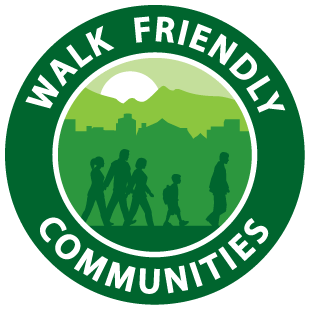Community Highlights
Chicago is designated as a Gold-level community due to its excellent design guidelines and policy approaches that support walking and pedestrian safety. Highlights of Chicago’s application include:
- The City’s 2021 Strategic Plan for Transportation outlines a number of measurable strategies and benchmarks to support broader goals of making it safer and easier to walk in Chicago, as well as providing access to opportunity and making streets free from violence.
- The Chicago Pedestrian Plan and Vision Zero Chicago set ambitious goals to make streets safer for all users and increase non-auto mode share. In particular, the City aims to eliminate traffic-related deaths and serious injuries by 2026 while increasing the percent of adults who walk, bike, and use transit. The 2016 Healthy Chicago 2.0 strategy to improve health citywide includes specific action items surrounding traffic safety, active transportation, equity, and land use.
- CDOT is working to rapidly respond to safety and walkability issues across the City. In 2017, the agency started its Rapid Delivery Projects program to install pedestrian safety improvements through affordable and quick build methods such as colored pavement markings and bollards. CDOT installed Rapid Delivery Projects at more than 50 intersections in the past five years. In the fall of 2019, CDOT piloted left turn traffic calming (LTTC) as part of a Rapid Delivery Project in downtown Chicago and saw encouraging improvements in vehicle turning behaviors.
- Chicago’s dedicated pedestrian staff shows the City’s strong commitment to pedestrians and a good walking environment. The City has a full time pedestrian coordinator, a Streetscape and Sustainable Design Program, and a multidisciplinary Pedestrian Advisory Committee. Chicago is also home to an independent advocacy group, the Active Transportation Alliance, whose mission includes improving walkability in the region.
- The City’s Complete Streets Design Guidelines provide a clearly-defined approach to implementing the Complete Streets Policy, ensuring that all road users are accommodated in transportation projects. The Guidelines go one step further with the adoption of a pedestrian-first modal hierarchy that ensures priority for people walking in project planning and design, as well as maintenance and operations.
- The City launched the “Open Chicago” initiative in 2021 to expand opportunities for physical activity, commerce and other community activities through shared streets and other forms of roadway reallocation.
- To respond to the challenge of winter weather and snow/ice accumulation on sidewalks, the City formed an interagency task force to close the gaps in existing policies and practices for addressing this problem. This culminated in 2015 with the adoption of a new Sidewalk Snow Removal ordinance, coupled with citywide outreach and education about new requirements.
- Chicago has excellent education and encouragement campaigns promoting walking in a number of ways. Safe Routes and Bicycling Ambassadors educate community members about safe travel and the benefits of walking and biking, including tens of thousands of children. In addition to teaching safe walking and biking in elementary schools, the Ambassadors educate teens during in-school drivers education classes about laws related to pedestrian safety and promote safe mobility among seniors. Chicago Public Schools (CPS) runs the Safe Passages program, which employs community watchers to monitor student travel routes at schools in neighborhoods where personal safety concerns are a barrier to walking.



